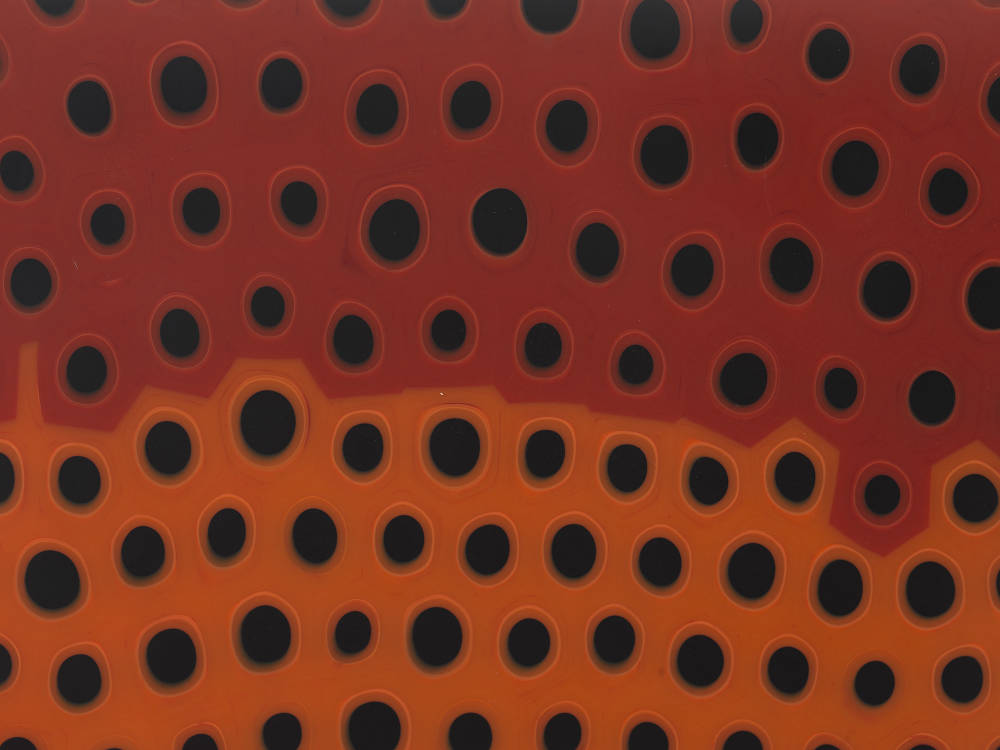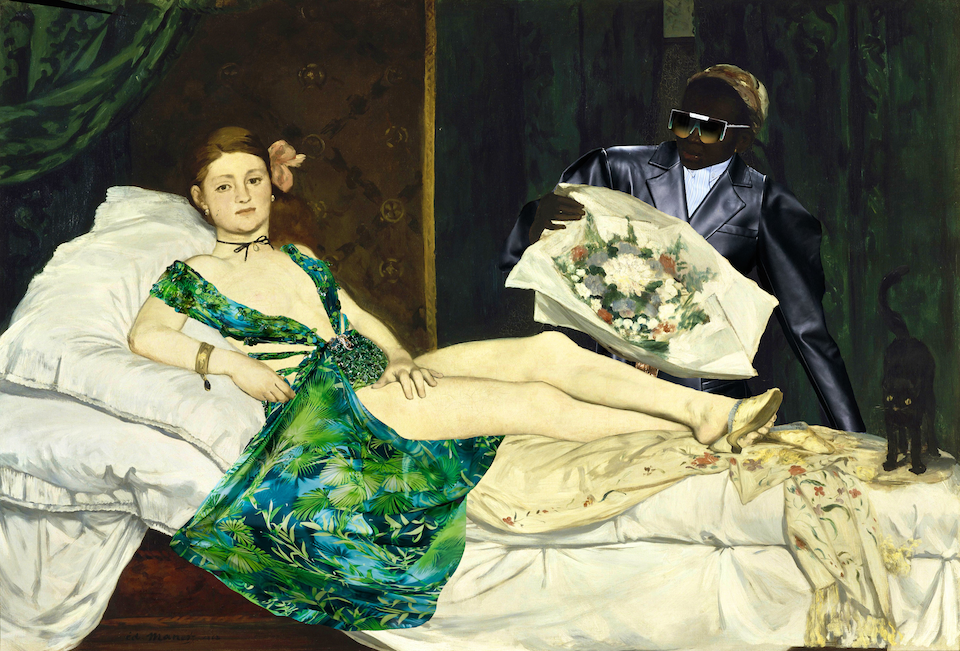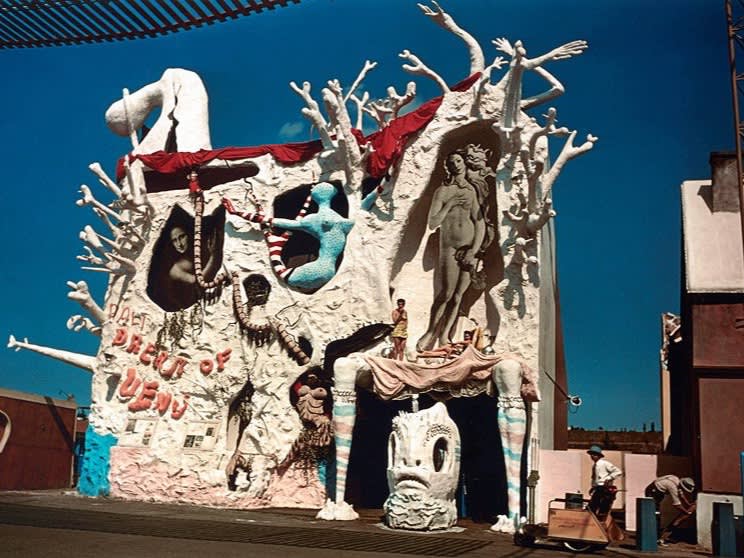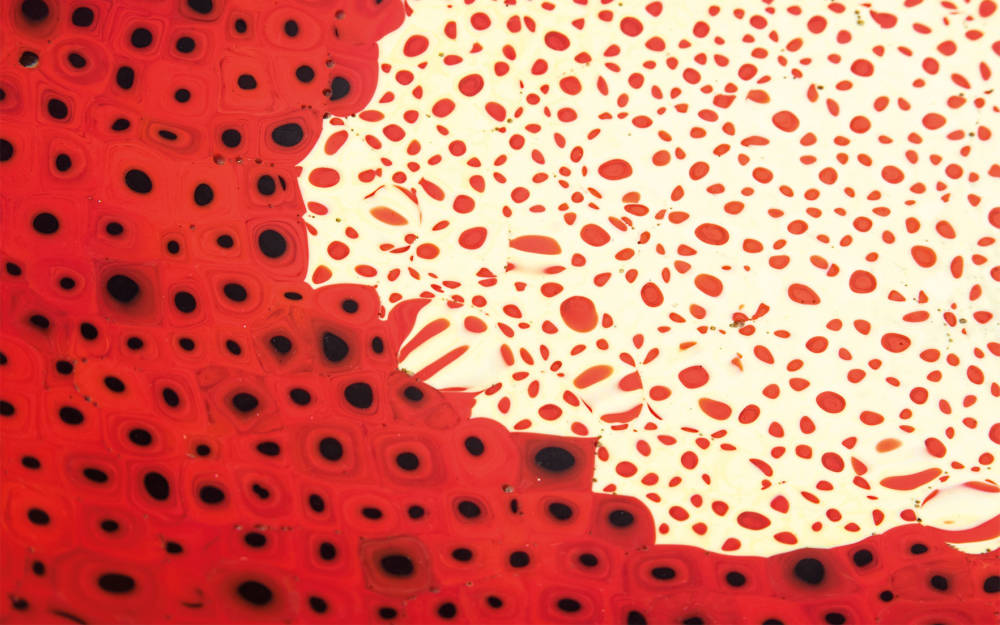
Carlo Scarpa
Important Murrine Dish, Technique Detail, 1940
Murrine, a glassmaking technique, first appeared in the Middle East over 4,000 years ago. The process, which refers to the colorful patterns and abstract images made in a glass cane that are revealed only when the rod is cut into thin cross-sections, was later revived by Venetian glassmakers in Murano during the early 15th century.
As a technique championed by notable glass artists, particularly throughout Italy, for hundreds of years, murrine has long been valued for its extreme flexibility, versatility, and distinct ability to render complex, vibrant designs. Once individual murrine, or a collection of murrina, are produced through the careful slicing of glass rods, the pieces are often arranged in a compact pattern and fused together into a single sheet of glass. As such, the completed material reveals a variety of new shapes, patterns, color combinations and abstract images, allowing for further manipulation through the process of glassblowing or the application of controlled heat over a desired mold.
Murrine Glass Vase
Italian, 1872-73
Venezia-Murano Company
Murrine Bowl, 1875-78
Though the murrine technique dates back thousands of years, the process went through a notable revival in the early 20th century, in part thanks to Italian architect Carlo Scarpa. Scarpa, whose career is often defined by his unique ability to combine new age, mass-manufacturing techniques of the early 20th century with elements of old world craftsmanship – seen most prominently in his renovations of historic buildings – became interested in glassblowing as a young boy growing up in Venice.
Carlo Scarpa for M.V.M Cappellin Murano
'Fenicio' Vase, 1930
Carlo Scarpa for M.V.M Cappellin Murano
Bowl, 1930
In 1925, Scarpa began working with Italian glass company M.V.M Cappellin. Their collaboration lasted over five years and propelled M.V.M into one of the sought after glass companies in Italy, ending only when the glassworks was sadly forced to close in 1931. The following year, Scarpa was hired as an artistic consultant at Venini, one of the world’s leading companies in the production of Murano glass. Known for their innovative techniques in the art of glassmaking, Venini gave Scarpa complete freedom to explore and create.
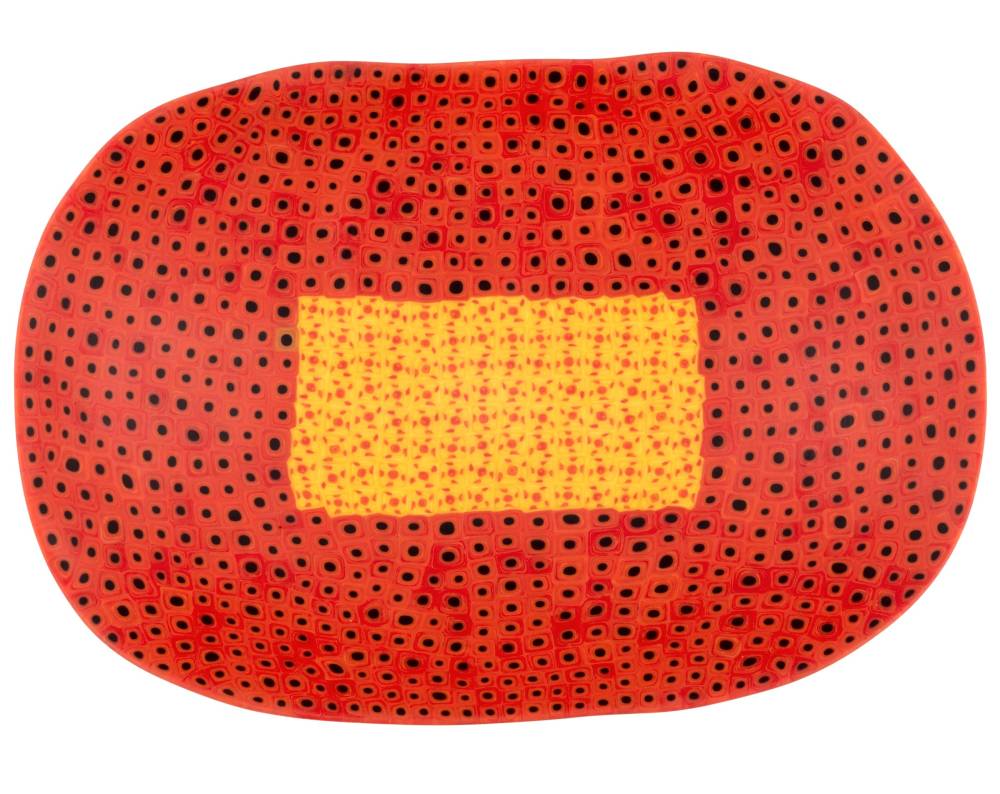
Carlo Scarpa for Venini Murrine Glass
Grande Coppa in Vetro a Murrine, 1940
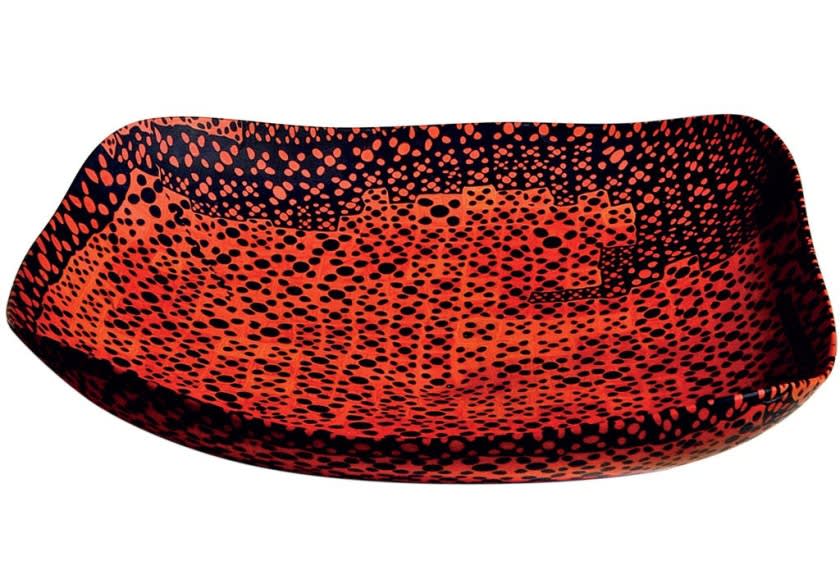
Carlo Scarpa for Venini Murrine Glass
Red and Black Bowl, 1932
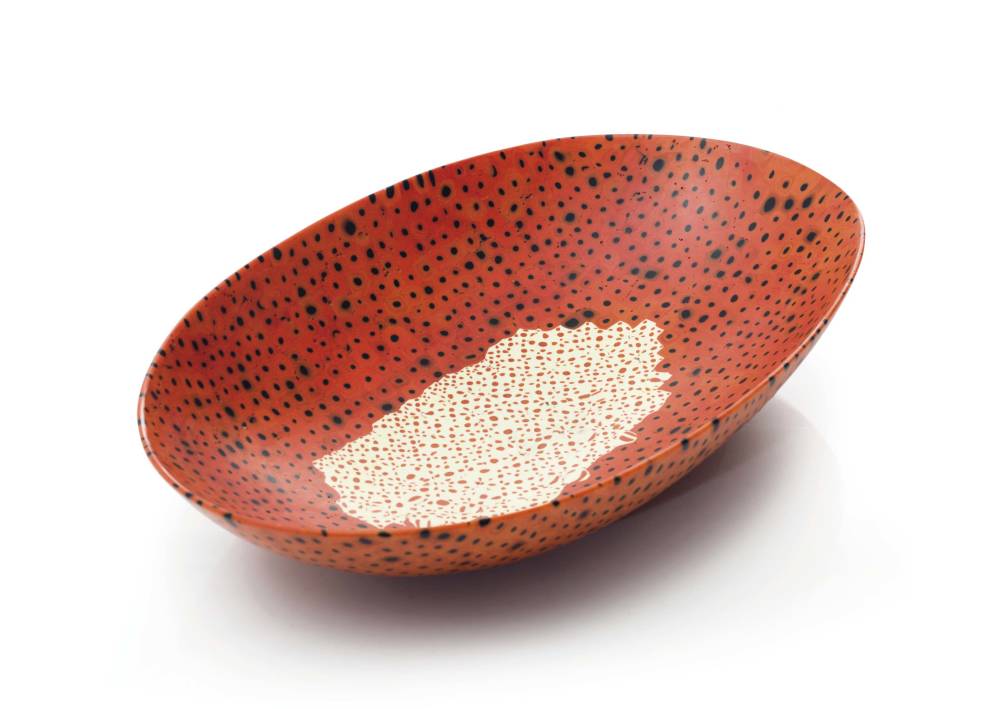
Carlo Scarpa
Murrine Dish, 1940
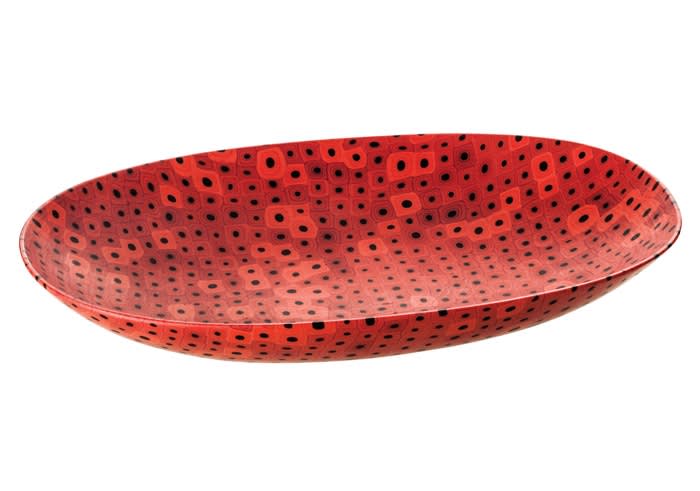
Carlo Scarpa for Venini Murrine Glass
Murrine Glass Dish, 1940
Throughout his 15 years at the company, Scarpa designed thousands of glass plates and vessels, among his most distinguished being those created using the murrine technique. Unlike tradition murrine glassworks, which yield a transparent, floral design, Scarpa’s objects were most often opaque and geometric in pattern. The architect employed vibrant shades of red, yellow and blue, contrasted with deep blacks and bright whites to render shapes and abstract images in a purposeful yet spontaneous manner. Akin to his formal work in architecture, Scarpa’s plates, vases and bowls employed techniques of old-world craftsmanship with new age construction methods
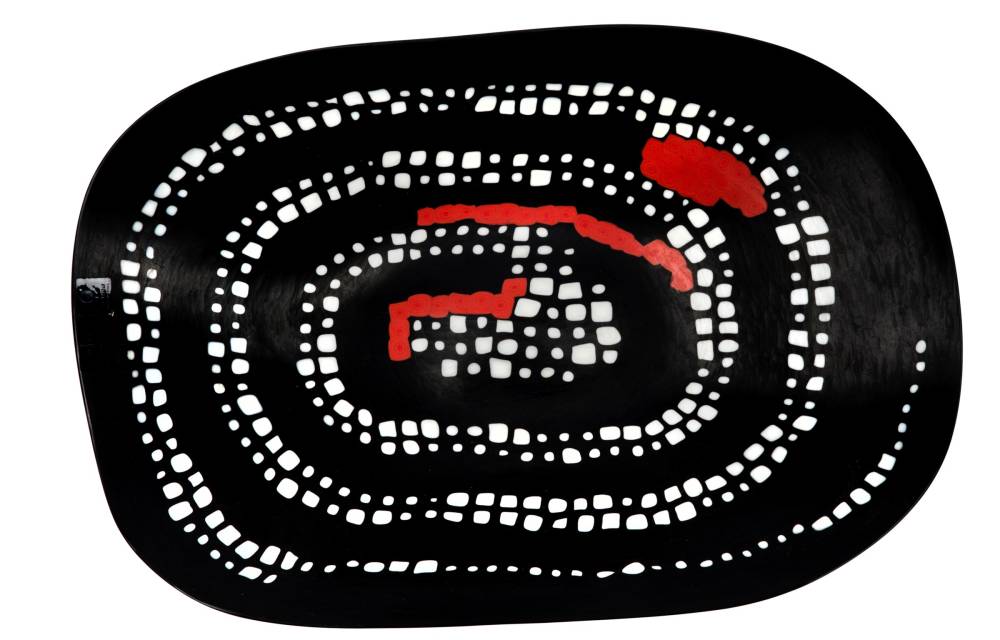
Carlo Scarpa
Murrine Glass Plate with Snake Pattern, 1940
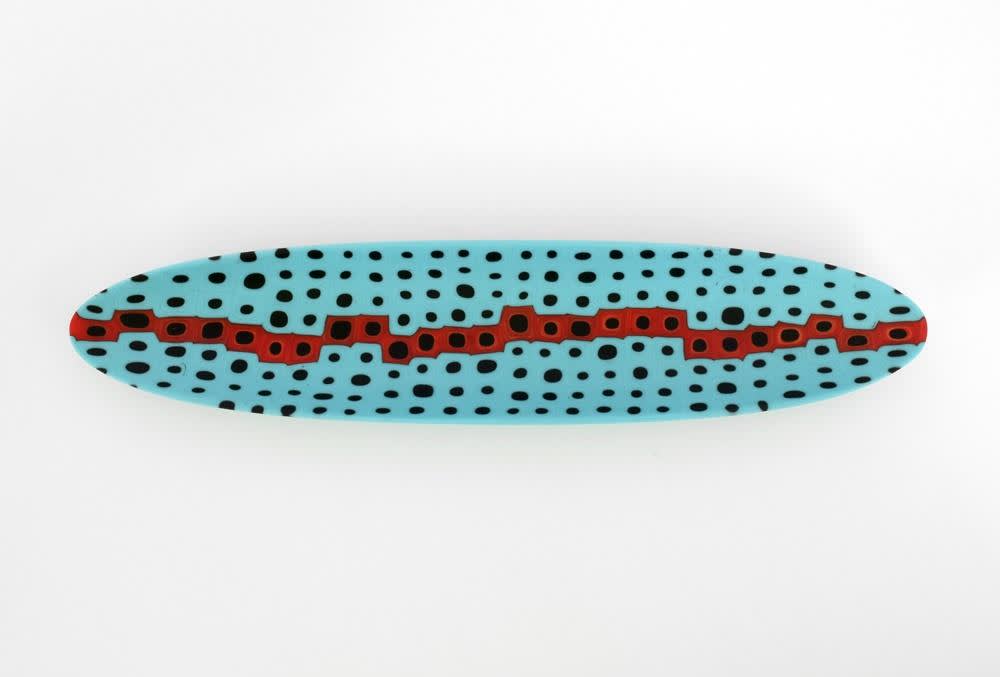
Carlo Scarpa for Venini Murrine Glass
Canoe Shaped Dish
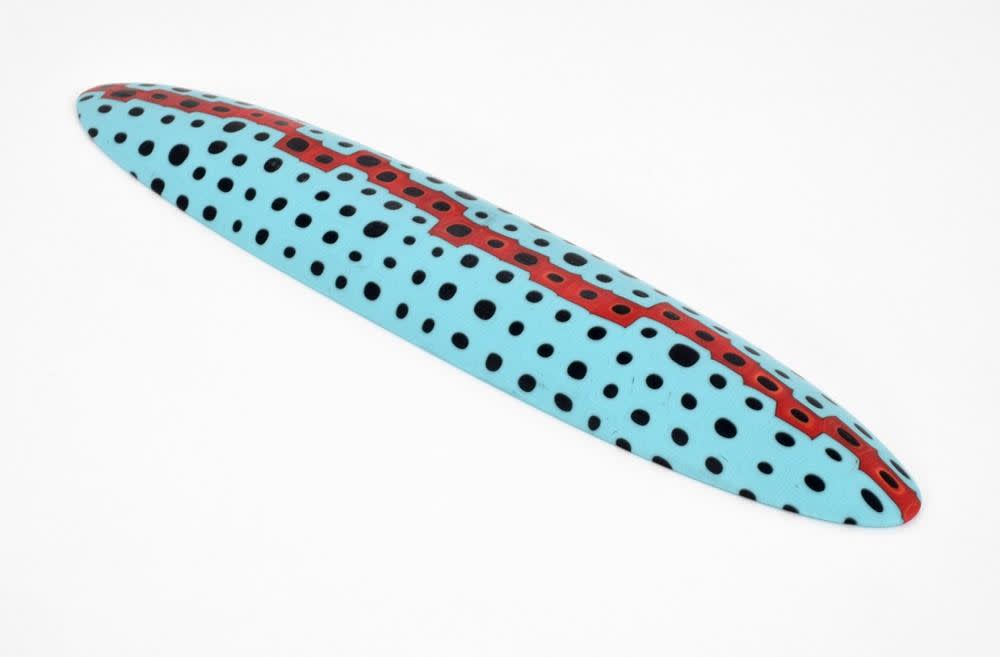
Carlo Scarpa for Venini Murrine Glass
Canoe Shaped Dish
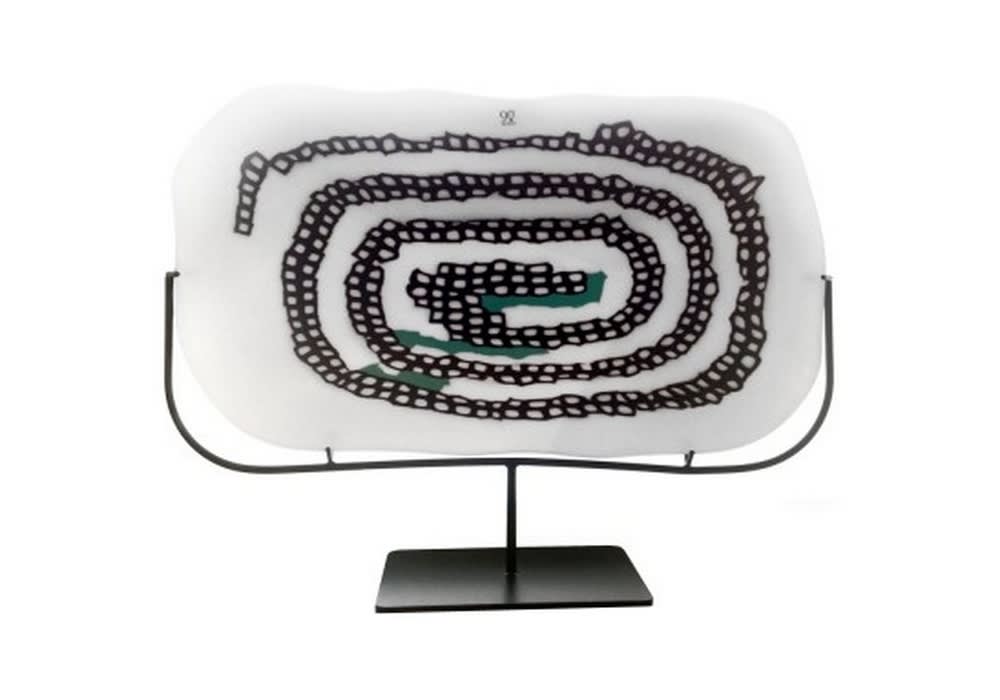
Carlo Scarpa for Venini Murrine Glass
'Serpente' Plate
The influence of Scarpa’s work with Venini was fast, particularly in the context of 20th century design. Most recently, industrial designer Marc Newson sough inspiration from these glassworks for a collection of murrine tables, rendered in Scarpa’s characteristic red, yellow and blue hues. Much like the Italian architect, Newson’s work represents a duality between the past and present, taking a classical glass technique like murrine, typically reserved for small objects and table top items, and employing it at a never-before-seen scale.
If Carlo Scarpa and Marc Newson’s shared fascination with this 4,000 year-old glass making technique are any indication, murrine has a bright future in the worlds of art, architecture and design.
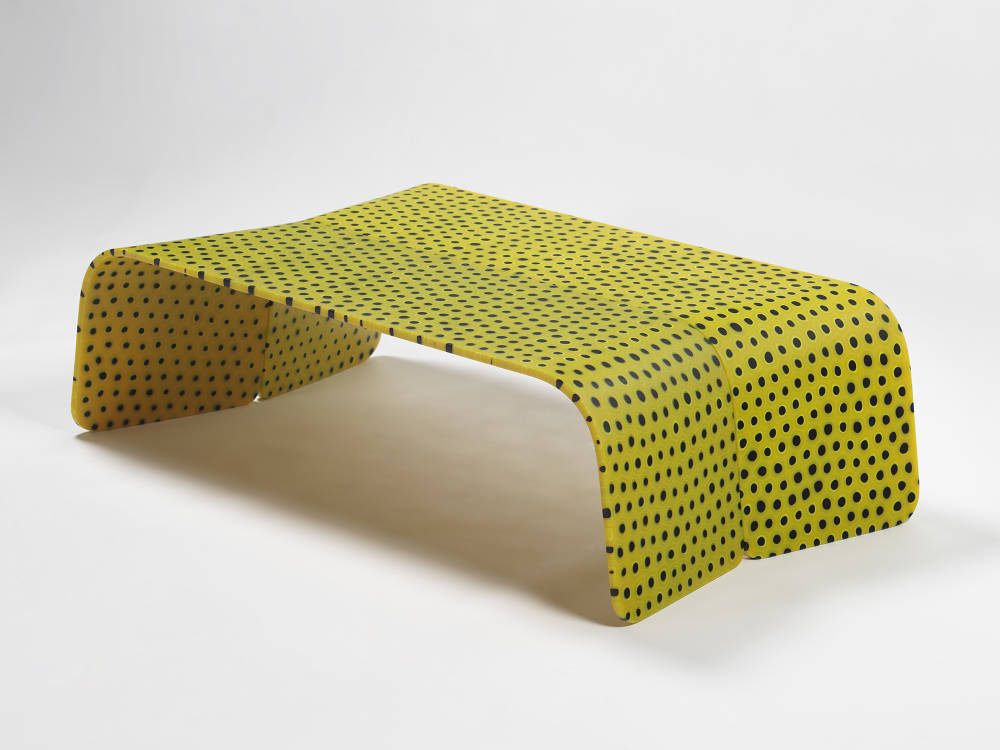
Marc Newson
Yellow Murrine Glass Table, 2019 - Image Courtesy of Gagosian Gallery
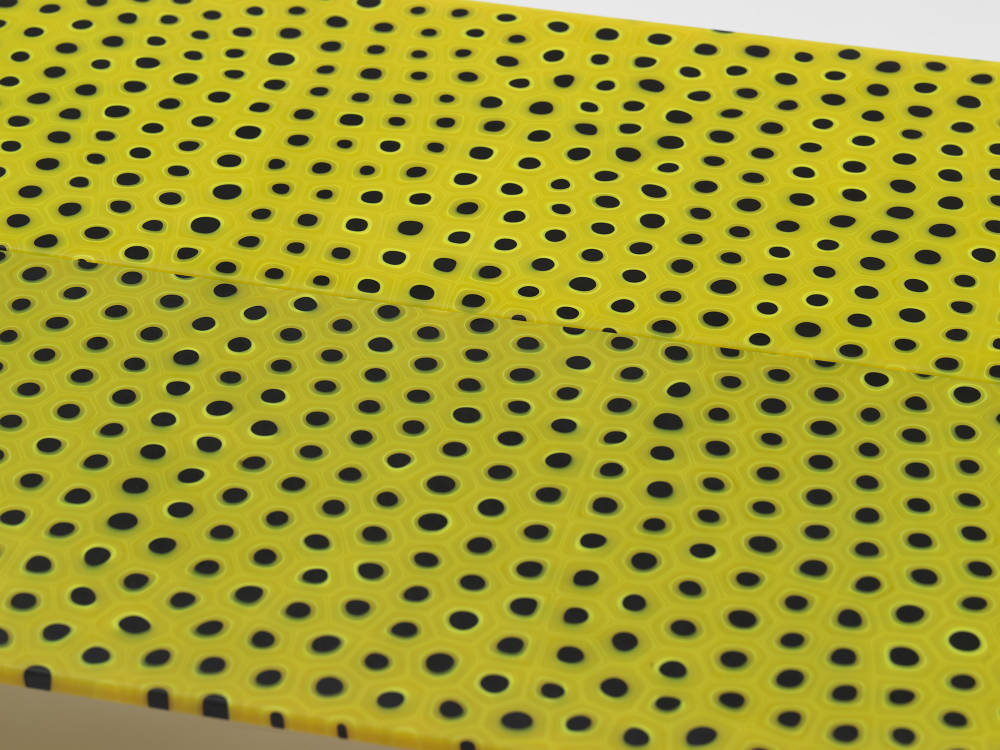
Marc Newson
Yellow Murrine Glass Table Detail, 2019 - Image Courtesy of Gagosian Gallery

Marc Newson
Yellow Murrine Glass Table, 2019 - Image Courtesy of Gagosian Gallery
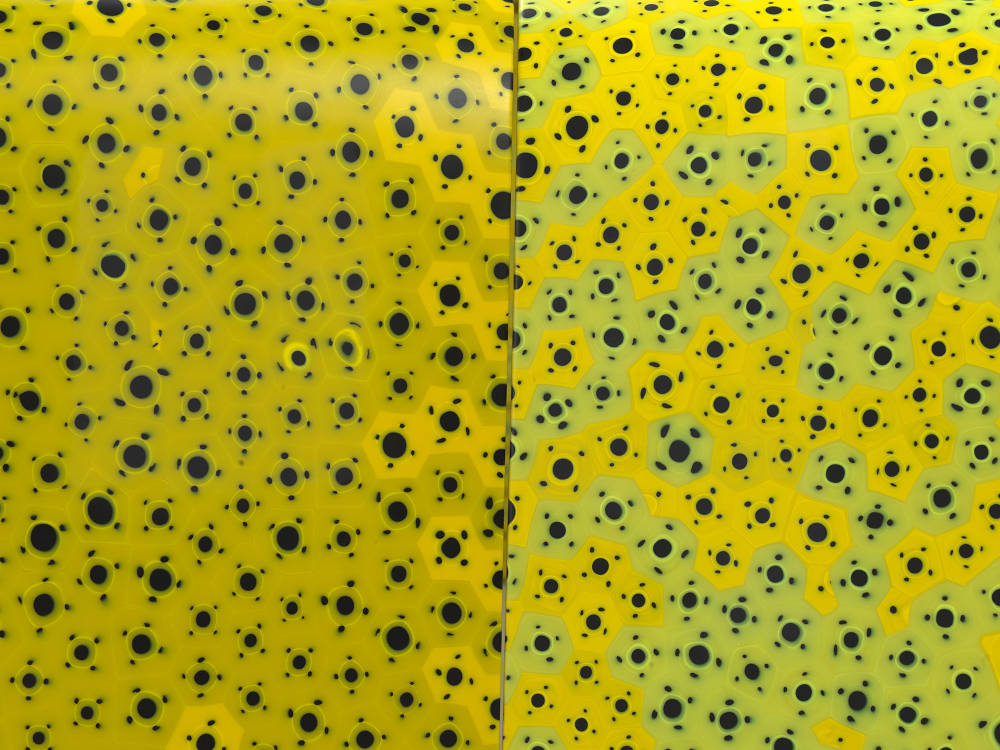
Marc Newson
Yellow Murrine Glass Table Detail, 2019 - Image Courtesy of Gagosian Gallery
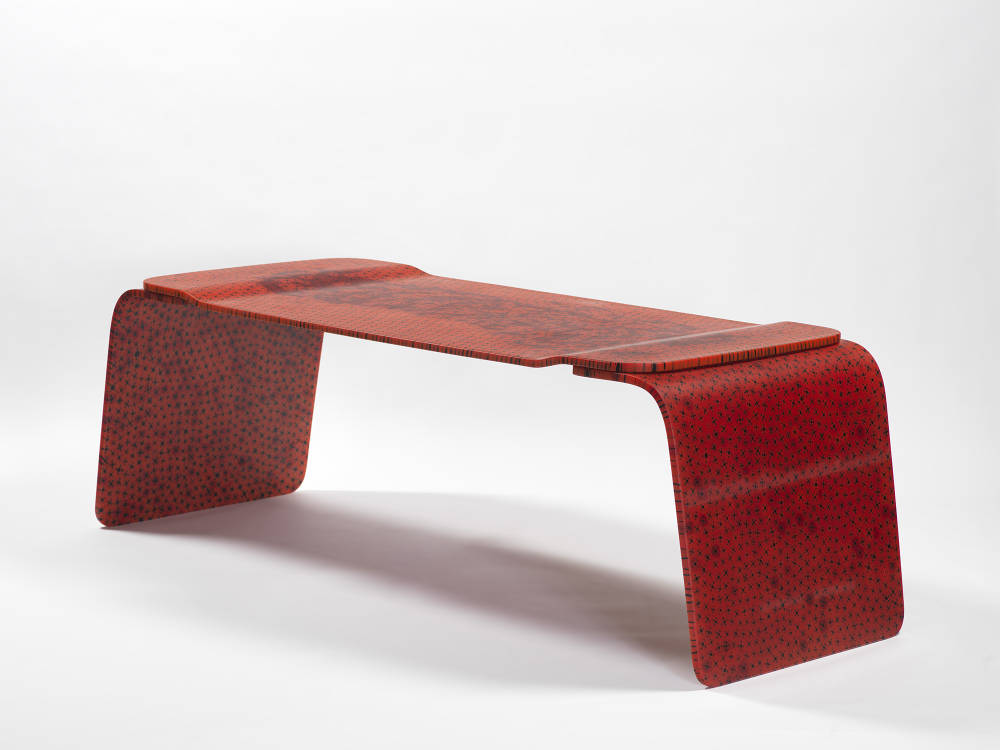
Marc Newson
Red Murrine Glass Table, 2019 - Image Courtesy of Gagosian Gallery
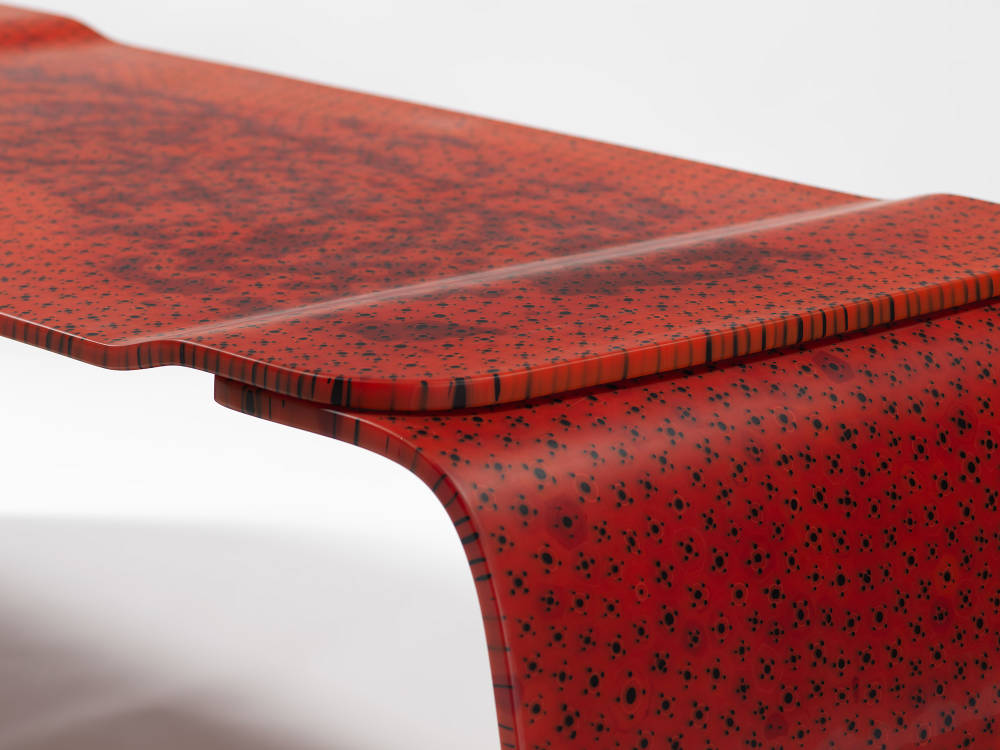
Marc Newson
Red Murrine Glass Table Detail, 2019 - Image Courtesy of Gagosian Gallery
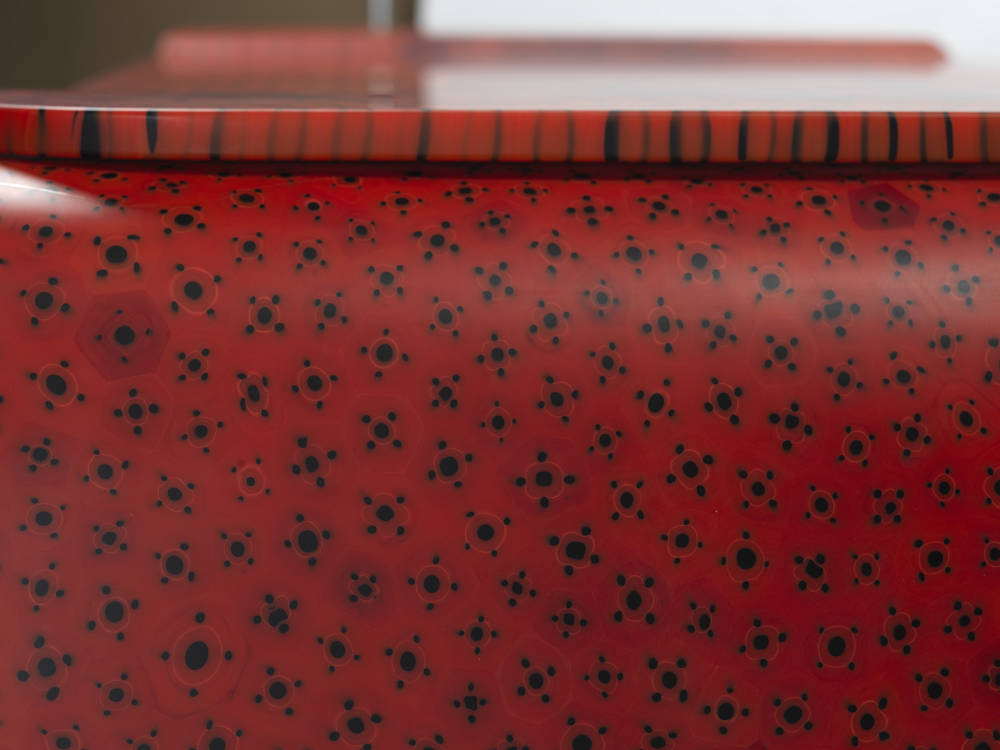
Marc Newson
Red Murrine Glass Table Detail, 2019 - Image Courtesy of Gagosian Gallery
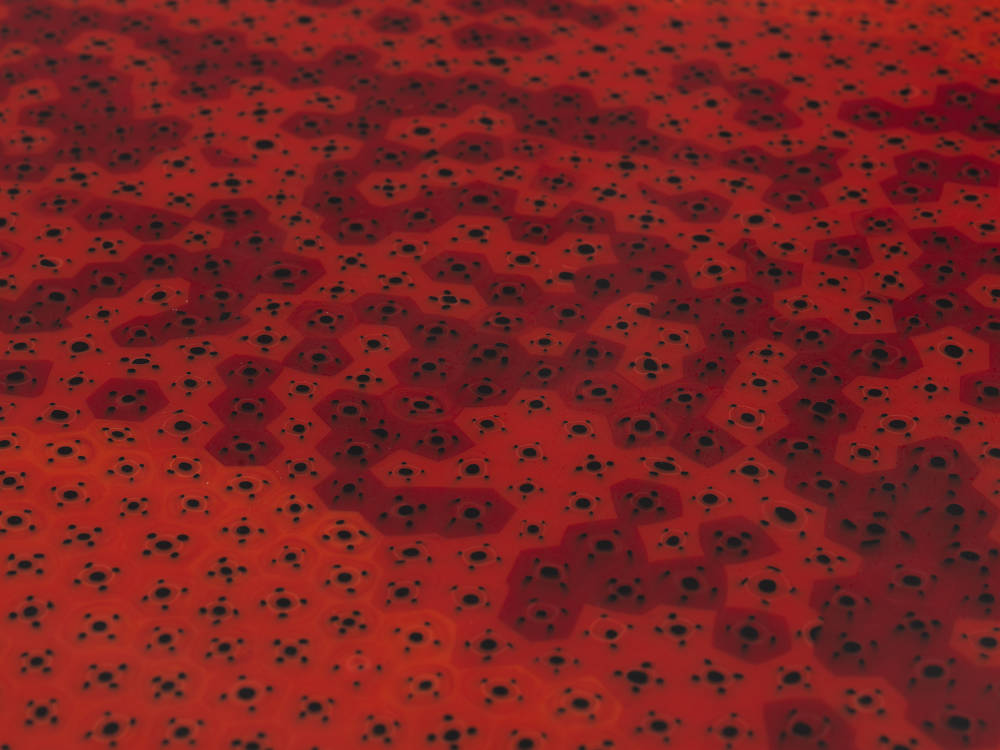
Marc Newson
Red Murrine Glass Table Detail, 2019 - Image Courtesy of Gagosian Gallery
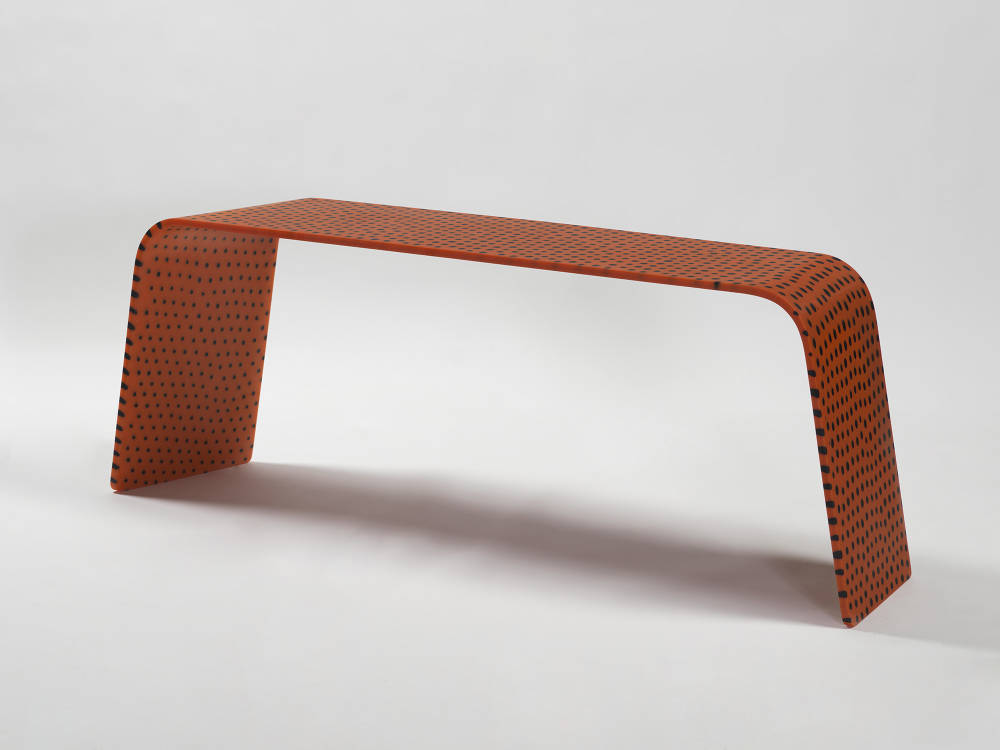
Marc Newson
Red Murrine Glass Table, 2019 - Image Courtesy of Gagosian Gallery
